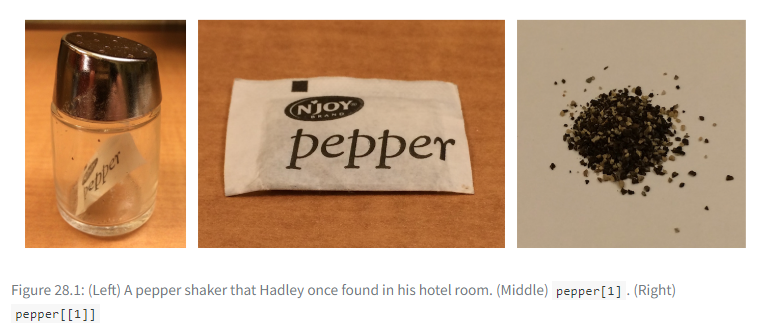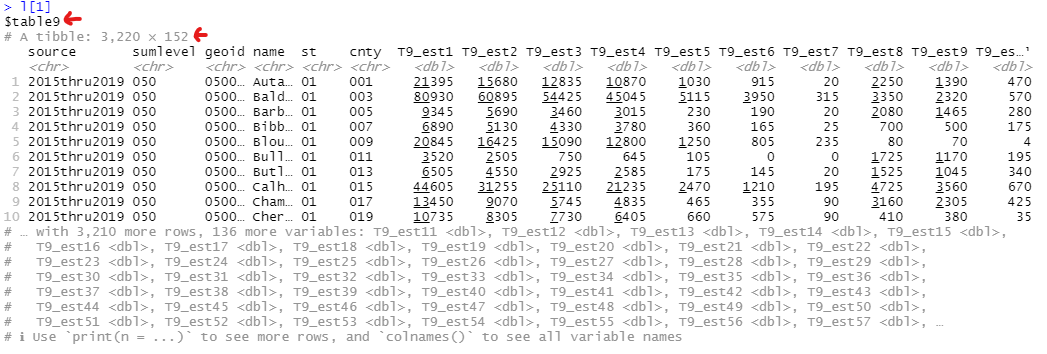Lists can not only store a mix of data types, but also more complex data (e.g. data frames, even lists themselves!). It’s an ideal option for a group of similar complex data, and decently sets us up for iteration! So in preparation for for loops, let’s examine lists and how to extract data from them.
Create a list
Anatomy
There’s several layers to a list, like a container within a container. To extract a specific element’s data, use double brackets instead one.
l # the whole list and all its elements
l[1] # the first element in its container; contains the name/index of element and the data
l[[1]] # the data of the first elementHadley Wickham’s pepper analogy

Names
Like vectors, lists can also be named
Now you can also access the data of a specific element by name using $ or [[]]
Now if you extract an element with only one [] like l[1], you can see that it’s a container holding the name of the element and the data itself.
